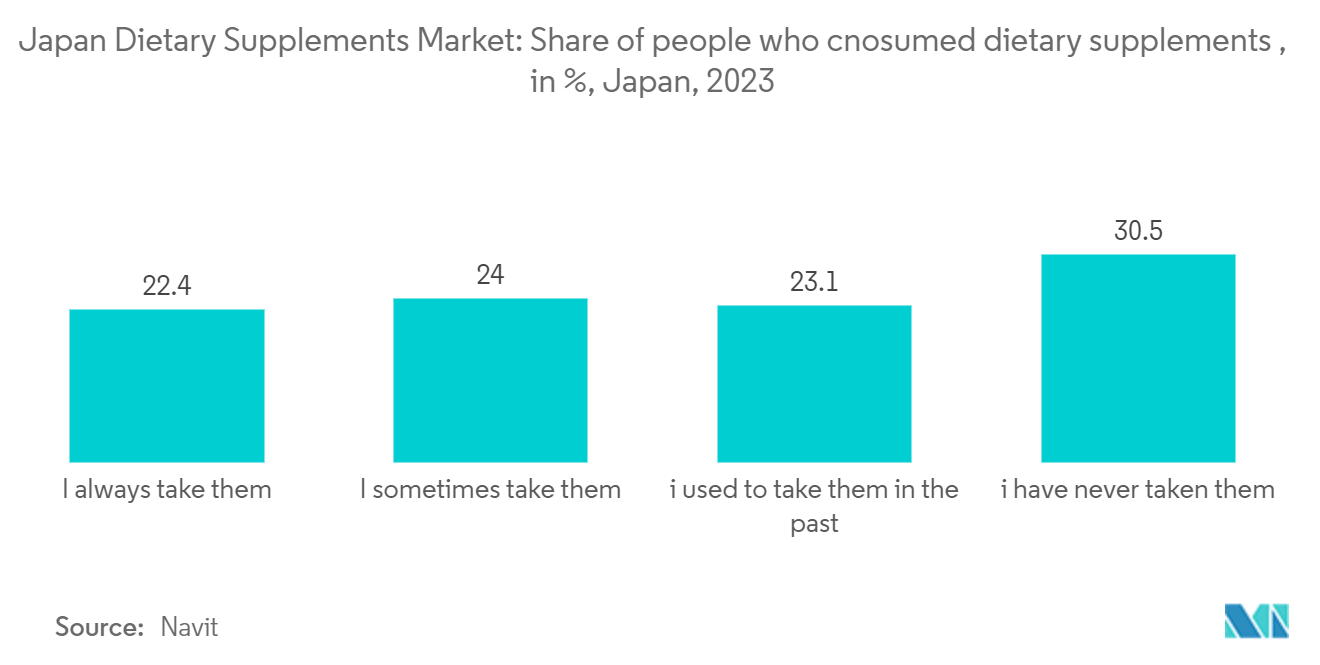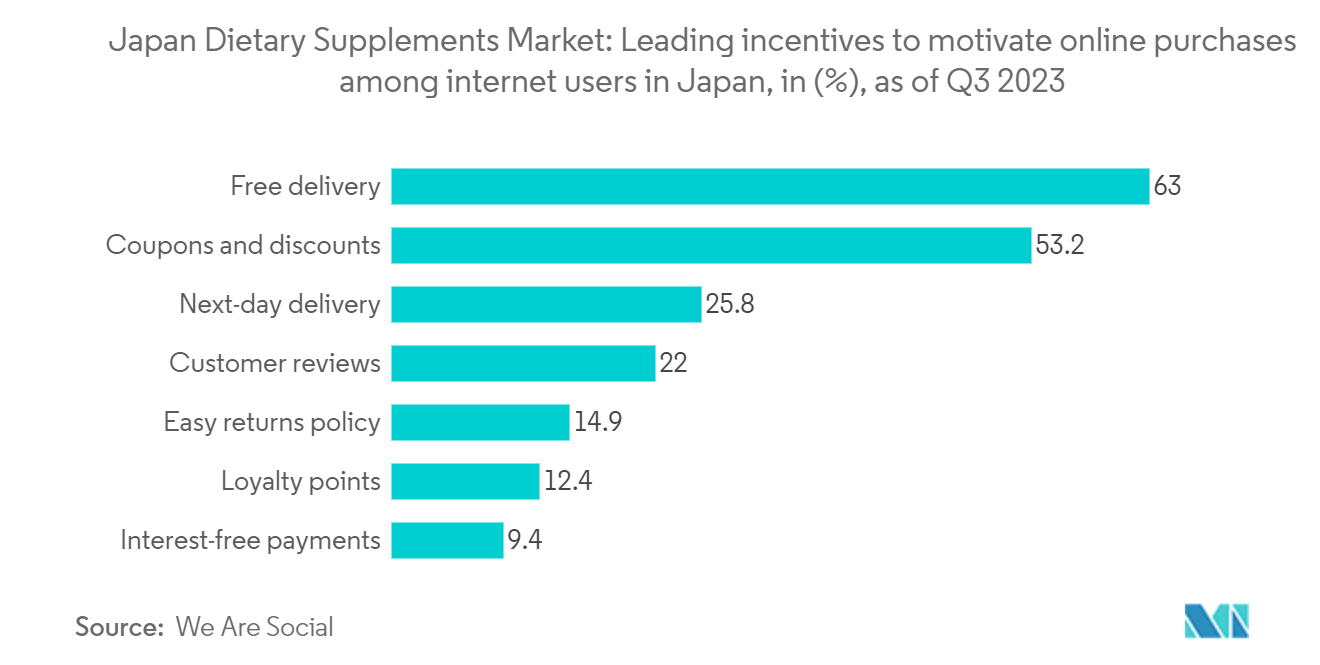Market Trends of Japan Dietary Supplements Industry
Consumption of Vitamins and Mineral Supplements Dominates the Japanese Dietary Supplements Market
Japan is witnessing a major demographic and cultural transformation due to the aging population and declining birth rates, which is expected to boost the demand for vitamin and mineral dietary supplements. According to an online survey funded by the Japanese government, in 2022, the most consumed mineral was calcium (60.9%), followed by iron (46.7%) and zinc (37.1%). Most people in the country consume these supplements to maintain health and supplement nutrients.
The aging Japanese population offers market players growth opportunities due to the changing nutritional requirements of the consumer base. This factor is projected to boost the consumption of various vitamins and minerals, especially vitamins A, C, and D, iron, zinc, and calcium, thereby driving the growth of this segment of the market. The players operating in this segment focus on product innovations and launches to expand their product portfolios and attract a more extensive consumer base. For instance, in April 2023, Kirin Holdings Company announced plans to purchase Australian vitamin brand Blackmores for AUD 1.88 billion (USD 1.24 billion). This strategic move aimed to bolster Kirin's health products portfolio. Kirin emphasized that the acquisition would significantly amplify the industry’s scale, enabling the group to extend its presence across the Asia-Pacific region, leveraging Blackmores' robust distribution network.

Online Retail Channels Projected to be the Fastest-growing Distribution Channel in the Market
Japanese consumers, driven by hectic schedules and prolonged work hours, have seamlessly embraced online shopping. E-commerce platforms, accessible 24/7, present a diverse array of supplements, negating the necessity for physical store visits. Detailed product descriptions, ingredient breakdowns, and easily accessible customer reviews empower shoppers to make well-informed choices. With the ability to effortlessly compare prices and brands, consumers develop a sense of trust and confidence in their online purchases. Furthermore, online retailers introduce subscription models, ensuring a steady supply of supplements and simplifying the purchasing process. A digital survey conducted by Planet Inc. in April 2024 revealed that 51.1% of respondents preferred online shopping because of the flexibility of being able to order at any time, followed by reasons like the convenience of doorstep delivery, cashless payment, and regular discounts.
Compared to their brick-and-mortar counterparts, online marketplaces boast a significantly broader supplement selection. They not only offer mainstream products but also cater to niche segments such as beauty, sports nutrition, and elder care, broadening their appeal. Leveraging consumer data, e-commerce platforms tailor product suggestions and promotions, significantly boosting the conversion rates of casual browsers into buyers. Additionally, supplement manufacturers are increasingly sidestepping traditional distribution channels, opting to directly engage with consumers online. This direct-to-consumer model grants them enhanced control over pricing, brand messaging, and customer interactions.


